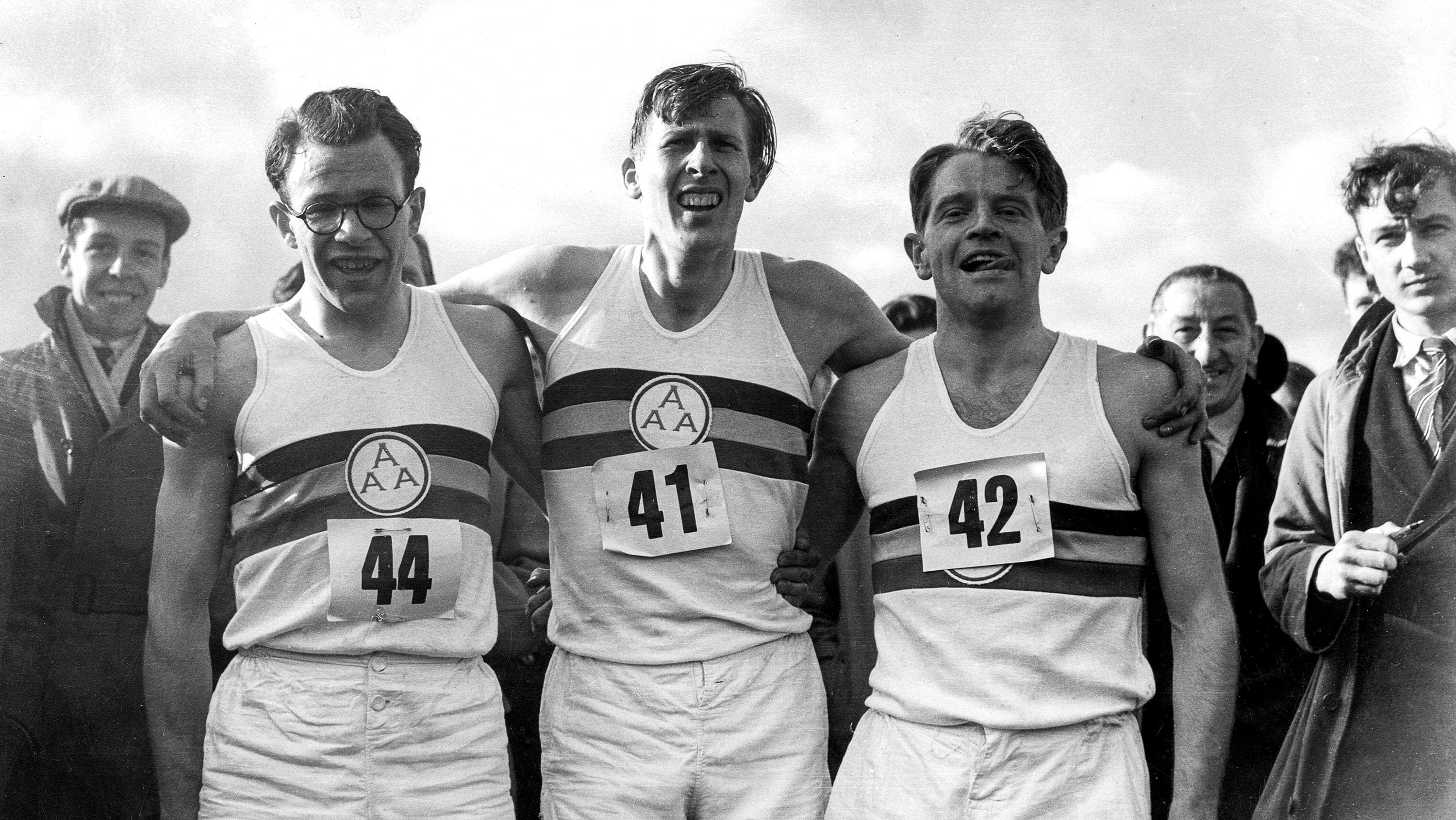A new study challenges the idea that extreme exercise can have a negative effect on longevity. On the contrary, it finds a significant benefit. The study, “Outrunning the grim reaper: Longevity of the first 200 sub-four-minute mile runners,” was published today in the British Journal of Sports Medicine.
The senior author of this new paper is Mark Haykowsky, a nursing professor at the University of Alberta. He says inspiration for the study came from the 70th anniversary of one of the biggest and most famous events in sports history. On May 6, 1954, Roger Bannister, a 25-year-old English medical trainee, became the first person to run a mile in under four minutes — 3:59.4 to be precise.
Bannister went on to a successful career as a neurologist and an academic. He also lived a long time, dying just 20 days shy of his 89th birthday in 2018. Haykowsky and his colleagues set out to determine the effect of running a sub-four-minute mile on longevity.
There have long been concerns that too much exercise can be a bad thing. That thinking dates back more than 2,500 years, to the first marathon. In 490 B.C., Pheidippides died suddenly after running from Marathon to Athens to announce the Greeks’ victorious battle against the Persians. But the hypothesis of Haykowsky’s team, which includes experts in exercise physiology, sports cardiology and population health, was that elite runners would actually live longer, on average, than the general population. The research proves them right.
Haykowsky and postdoctoral fellow Stephen Foulkes and their team took a look at the first 200 athletes to run a mile in under four minutes. Each runner’s date of birth, the date of their first successful mile attempt, current age if still alive or age at death, was compared with their country of origin-specific life expectancy. The study included all sub-four-minute milers regardless of ethnicity, nationality and socioeconomic status. The study included no women as none have yet broken the four-minute mile.
The researchers found that the sub-four-minute milers lived an average of 4.74 years longer than their predicted life expectancy. “That is significant” says Haykowsky, who has himself run both the Boston and New York marathons. “Now, that’s provided those are quality years, right?”
The team did not delve into factors about quality of life as athletes age, as the data were outside the purview of this study. Of course, people who end up being able to run a mile in under four minutes have some special qualities.
“I personally think the athletes who are doing this, they are phenomenal. They’ve got great genetics. They also have great training, big hearts and lungs, and very high quality vasculature and skeletal muscles.”
And Haykowsky says there is the psychological component too. “To do a sub-four you’ve got to be mentally tough. If you watch Bannister do the sub-four online, he’s in pain. It’s painful.”
Another interesting finding in the study is that the longevity advantage has varied over the decades. Those runners whose first successful sub-four-minute-mile was in the 1950s, lived an average of 9.2 years longer than the general population. Those who did it in the 1960s showed an average increase of 5.5 years, and those in the 1970s had an average longer life of 2.9 years. Haykowsky speculates that the reason for those differences may be that milers from the 1960s and 70s haven’t been followed up long enough, and that in 20 years there may be similar numbers.
Haykowsky’s study is of men who have run a mile in less than four minutes and trained from a young age. He speculates that studies looking at elite female runners at the top of their field who have trained from a young age would find similar life-lengthening gains, regardless of if they are breaking the four-minute mark.
But is there still a benefit to taking up vigorous exercise later in life? Haykowsky strongly believes there is.
“Someone who starts later in life is not going to run a sub-four,” he says. “But from a health perspective, getting people who were sedentary — which unfortunately in North America is almost everybody because we’ve engineered physical activity out of our lives — moderate to vigorous exercise will improve their overall survivorship.”
Haykowsky says that the bar for what counts as “vigorous” is low for people who are out of shape, but undertaking progressively more vigorous activity gets easier, and it’s beneficial.
“My take is twofold. First, in the study we countered this notion that extreme exercise is detrimental,” says Haykowsky. “And from a health perspective, it’s yet another study that shows exercise is beneficial for longevity, that we are meant to sit less and move more.”
Mark Haykowsky is director of the Integrated Cardiovascular Exercise Physiology and Rehabilitation (iCARE) Laboratory, and is supported by an endowed research chair in Aging and Quality of Life from the University of Alberta’s Faculty of Nursing.
